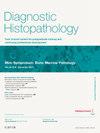Integrating histopathology and epidemiology to explore cancer aetiology and survival
引用次数: 0
Abstract
Cancer epidemiology involves using large population studies to describe disease patterns and investigate factors associated with cancer incidence and survival. As the classification of cancers grows ever more complex, with subtypes defined by both conventional histopathological features and novel molecular techniques, it is becoming increasingly important to take account of histopathology in cancer epidemiology research. This review discusses selected examples of where appropriate integration of histopathology into clinical trials and observational epidemiological studies has enabled clinically-important insights into cancer aetiology and survival, including: identifying drugs which are effective in specific molecularly-defined cancer subtypes; demonstrating the value of histopathological variables in predicting survival in breast and ovarian cancers; gaining novel insights into contrasting risk factors for histological types of oesophageal cancer; and using epidemiology to complement histopathology in strengthening the evidence base for the origins and prevention of ovarian cancer. Work is ongoing to integrate histopathology data, including digital slides, into large population health resources such as the 100,000 Genomes Project and the UK Biobank cohort, which will eventually provide rich and complex datasets for exploring histopathology-related questions on a population level. However, expert clinical pathology involvement will be essential to ensure this future work remains scientifically robust and clinically relevant.
结合组织病理学和流行病学探讨癌症的病因和生存
癌症流行病学涉及使用大量人口研究来描述疾病模式并调查与癌症发病率和生存率相关的因素。随着癌症的分类越来越复杂,不同的亚型由传统的组织病理学特征和新的分子技术确定,在癌症流行病学研究中考虑组织病理学变得越来越重要。本综述讨论了将组织病理学适当整合到临床试验和观察性流行病学研究中的一些例子,这些研究使我们能够对癌症病因和生存有重要的临床见解,包括:确定对特定分子定义的癌症亚型有效的药物;证明组织病理学变量在预测乳腺癌和卵巢癌患者生存中的价值;获得对食管癌组织学类型危险因素对比的新见解;并利用流行病学来补充组织病理学,以加强卵巢癌起源和预防的证据基础。目前正在进行的工作是将组织病理学数据(包括数字幻灯片)整合到大型人口健康资源中,如100,000基因组计划和英国生物银行队列,这将最终为探索人口水平上的组织病理学相关问题提供丰富而复杂的数据集。然而,专家的临床病理学参与将是必不可少的,以确保这项未来的工作保持科学稳健和临床相关。
本文章由计算机程序翻译,如有差异,请以英文原文为准。
求助全文
约1分钟内获得全文
求助全文
来源期刊

Diagnostic Histopathology
Medicine-Pathology and Forensic Medicine
CiteScore
1.30
自引率
0.00%
发文量
64
期刊介绍:
This monthly review journal aims to provide the practising diagnostic pathologist and trainee pathologist with up-to-date reviews on histopathology and cytology and related technical advances. Each issue contains invited articles on a variety of topics from experts in the field and includes a mini-symposium exploring one subject in greater depth. Articles consist of system-based, disease-based reviews and advances in technology. They update the readers on day-to-day diagnostic work and keep them informed of important new developments. An additional feature is the short section devoted to hypotheses; these have been refereed. There is also a correspondence section.
 求助内容:
求助内容: 应助结果提醒方式:
应助结果提醒方式:


